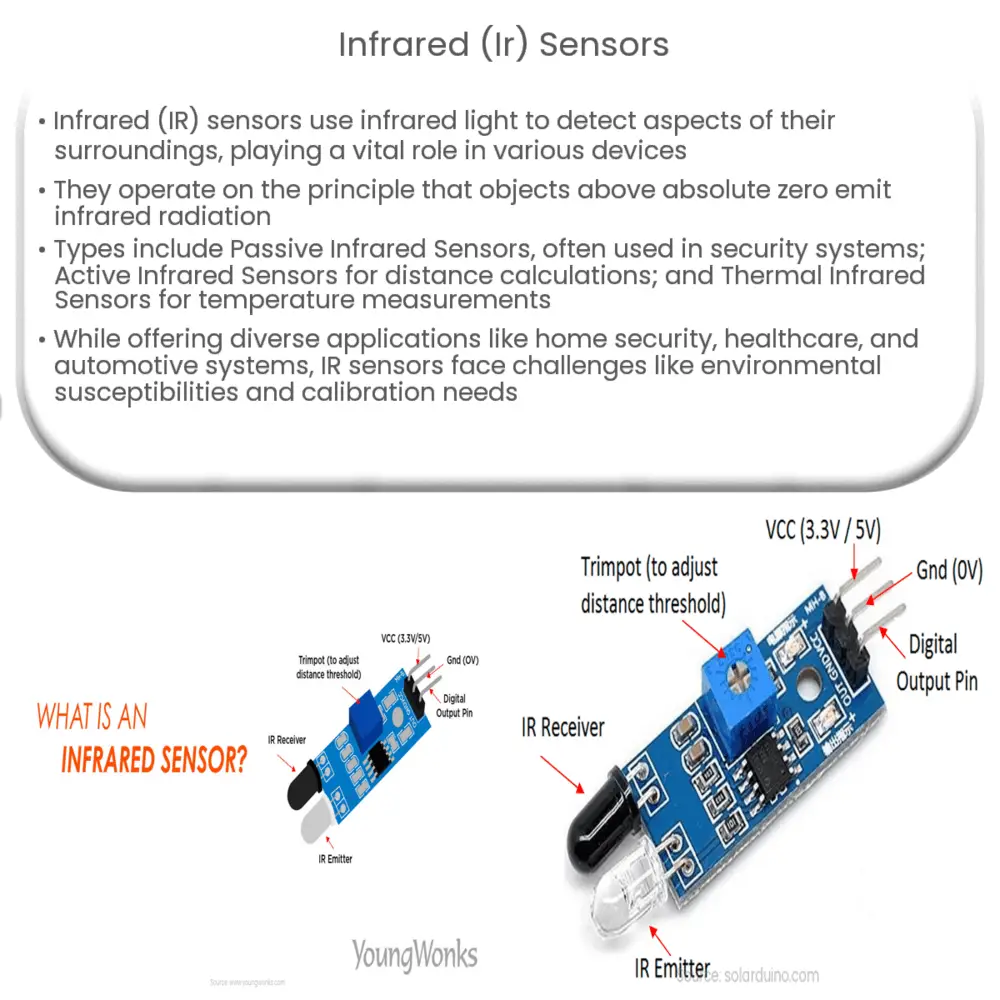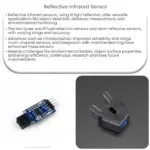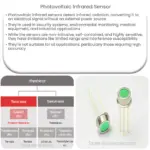Explore the world of Infrared (IR) sensors: their workings, types, vast applications, and potential challenges in our detailed guide.

Understanding Infrared (IR) Sensors
Infrared (IR) sensors are instruments that utilize infrared light to detect certain aspects of their surroundings. These sensors form a critical component of many devices and technologies that we use on a daily basis. By interpreting the infrared radiation emitted or reflected by objects, they enable us to gather data and take actions based on that information.
The Working Principle of Infrared Sensors
Infrared sensors operate on the principle that all objects with a temperature above absolute zero emit heat energy in the form of infrared radiation. The sensors detect this radiation and convert it into a form that can be interpreted or measured.
Infrared sensors typically consist of two main components: an infrared source and an infrared detector. The source emits infrared waves, which are reflected off the object and then captured by the detector. The amount and wavelength of the reflected radiation provide information about the object’s distance, presence, or temperature.
Types of Infrared Sensors
- Passive Infrared Sensors (PIR): These sensors do not emit infrared waves but instead detect the radiation emitted by objects. They are commonly used in security systems, as they can detect the infrared radiation emitted by living bodies.
- Active Infrared Sensors: These sensors emit infrared waves and measure the time taken for the wave to return after bouncing off an object. This information can be used to calculate distance, and such sensors are often used in obstacle detection systems.
- Thermal Infrared Sensors: These sensors detect infrared radiation emitted by an object to measure its temperature. They are widely used in thermal imaging cameras, night vision devices, and temperature monitoring systems.
Applications of Infrared Sensors
With their diverse range of sensing capabilities, infrared sensors are used in a multitude of applications.
- Home Security: As mentioned earlier, passive infrared sensors are a common component in home security systems. They detect the presence of intruders by sensing the infrared radiation emitted by their bodies.
- Environmental Monitoring: Infrared sensors are used in environmental monitoring systems to measure temperature variations. This is crucial in tracking and predicting weather patterns, as well as detecting wildfires.
- Healthcare: Infrared sensors have significant applications in the medical field. They can measure body temperature non-invasively, which is especially valuable in infectious disease detection where minimal contact is ideal.
- Automotive Systems: Modern vehicles often utilize active infrared sensors as part of their advanced driver-assistance systems (ADAS). These sensors help in detecting obstacles, assisting with parking, and improving overall safety.
- Consumer Electronics: Devices like televisions and air conditioners often come with remote controls that use infrared sensors for wireless communication. The sensor in the device detects the specific infrared signals emitted by the remote control to carry out various functions.
- Industrial Automation: Infrared sensors play a pivotal role in many industrial processes. They can monitor the temperature of machinery, detect objects on production lines, and even identify different materials based on their infrared reflection or absorption characteristics.
- Astronomy: Infrared sensors also play a key role in astronomy. These sensors, when mounted on telescopes, can detect celestial bodies emitting infrared radiation, providing vital insights into the universe.
Continuing on this topic, we will delve deeper into the specific use cases of infrared sensors in part two of this article.
Further Applications of Infrared Sensors
Infrared Sensors: Limitations and Challenges
While infrared sensors have wide-ranging applications and offer numerous advantages, they also come with their share of limitations. These include susceptibility to environmental conditions like fog, dust, and rain, which can affect their accuracy. In addition, these sensors can sometimes face issues related to power consumption and the need for precise calibration. Nevertheless, advances in technology continue to improve their robustness and reliability.
Conclusion
In conclusion, infrared (IR) sensors are a remarkable blend of physics and technology. They leverage the properties of infrared radiation to provide valuable data about our environment, contributing significantly to fields as diverse as home security, healthcare, automotive safety, and astronomy. Despite certain limitations, the breadth of their potential applications continues to expand, testament to the incredible versatility of these sensing devices. As technology progresses and our understanding of infrared sensors deepens, it’s exciting to contemplate the new applications and advancements that lie ahead.




